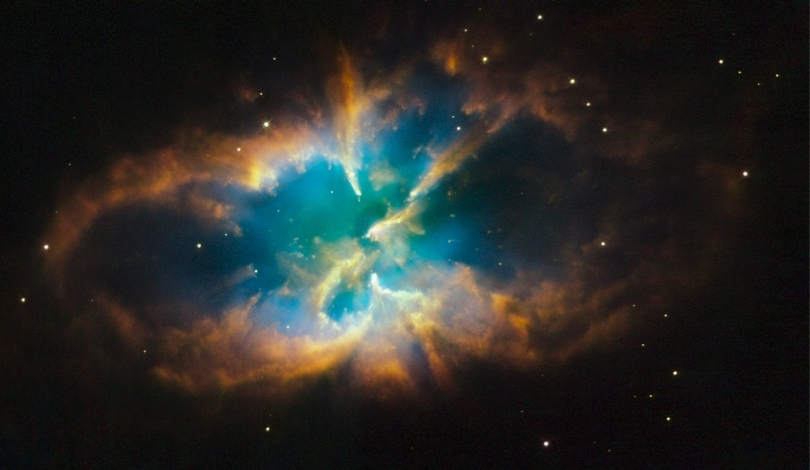A team of international astronomers has identified an Earth-sized exoplanet orbiting a white dwarf star approximately 4,000 light-years from Earth. This discovery, made using the 10-meter telescope at the Keck Observatory in Hawaii, mirrors predictions about our Solar System‘s future after the Sun becomes a white dwarf. The newfound planet resides at a distance twice that of Earth’s current orbit, offering insights into planetary survival during their star’s late evolutionary stages. The detection contributes to the growing catalog of over 5,700 confirmed exoplanets and enhances our understanding of planetary dynamics in aging stellar systems.
Previously, the identification of planets around white dwarfs was limited, offering scarce examples to study potential survival mechanisms. The recent discovery expands the small list of such systems, providing a valuable case to analyze the aftermath of stellar evolution on orbiting planets. Earlier assumptions about planet retention during a star’s transformation have been challenging to verify, but this finding offers empirical evidence supporting the possibility of long-term planetary existence beyond their host star’s main sequence lifespan.
How Did Astronomers Detect the Earth-like Planet?
The planet was discovered through a microlensing event, where the gravitational field of the white dwarf amplified the light of a background star. Utilizing the Korea Microlensing Telescope Network (KMTNet), the team initially observed the event in 2020. Follow-up observations with the Keck II telescope allowed for a more detailed analysis once the lensing effects diminished, confirming the planet’s presence.
What Makes This Planet Similar to Earth?
The planet shares a similar size with Earth and resides within a region where liquid water could potentially exist, albeit under different stellar conditions. Orbiting at roughly twice the current Earth distance from its white dwarf host, it occupies a zone where temperatures might allow for the presence of oceans, drawing parallels to Earth’s habitable environment. However, the lack of sunlight from the white dwarf poses significant challenges for sustaining life as we know it.
What Are the Future Implications for Our Solar System?
The discovery provides a model for understanding the ultimate fate of Earth as the Sun approaches its red giant phase and subsequent white dwarf stage. It suggests that Earth’s orbit might shift outward, potentially avoiding engulfment by the expanding Sun.
“We do not currently have a consensus whether Earth could avoid being engulfed by the red giant sun in 6 billion years. In any case, planet Earth will only be habitable for around another billion years, at which point Earth’s oceans would be vaporized by runaway greenhouse effect — long before the risk of getting swallowed by the red giant.”
Located near the galactic center, the system was initially detected when the white dwarf’s gravity bent light from a distant background star. The presence of a brown dwarf companion, measured at 17 times Jupiter’s mass, adds complexity to the system’s dynamics. Subsequent imaging efforts with the Keck Observatory confirmed the white dwarf status due to the absence of light from the star, distinguishing it from other potential stellar remnants.
Insights from the research indicate that even if Earth-like planets survive their host stars’ transformations, maintaining habitability remains uncertain.
“Whether life can survive on Earth through that (red giant) period is unknown. But certainly the most important thing is that Earth isn’t swallowed by the Sun when it becomes a red giant. This system that Keming’s found is an example of a planet — probably an Earth-like planet originally on a similar orbit to Earth — that survived its host star’s red giant phase.”
The research team addressed microlensing degeneracy—a situation where different lensing scenarios produce similar observations—by employing a machine-learning algorithm to analyze multiple configurations. This approach ruled out alternative models, confirming the presence and characteristics of the white dwarf and its accompanying planet. The findings highlight the effectiveness of advanced computational techniques in resolving complex astronomical data, paving the way for more accurate exoplanet detections.
Looking ahead, next-generation telescopes like NASA’s Nancy Grace Roman Space Telescope aim to further explore such exoplanetary systems.
“Microlensing has turned into a very interesting way of studying other star systems that can’t be observed and detected by the conventional means, i.e. the transit method or the radial velocity method. There is a whole set of worlds that are now opening up to us through the microlensing channel, and what’s exciting is that we’re on the precipice of finding exotic configurations like this.”
The discovery of an Earth-like planet orbiting a white dwarf offers a tangible example of planetary endurance amidst stellar evolution. While the planet’s existence suggests that Earth could potentially survive the Sun’s red giant phase, the subsequent habitability remains doubtful due to drastic environmental changes. This revelation emphasizes the necessity for future research to explore the mechanisms that allow planets to maintain stability and conditions conducive to life in the long term. Understanding such systems not only sheds light on our own Solar System’s future but also enhances the search for resilient exoplanets capable of supporting life in various cosmic scenarios.










